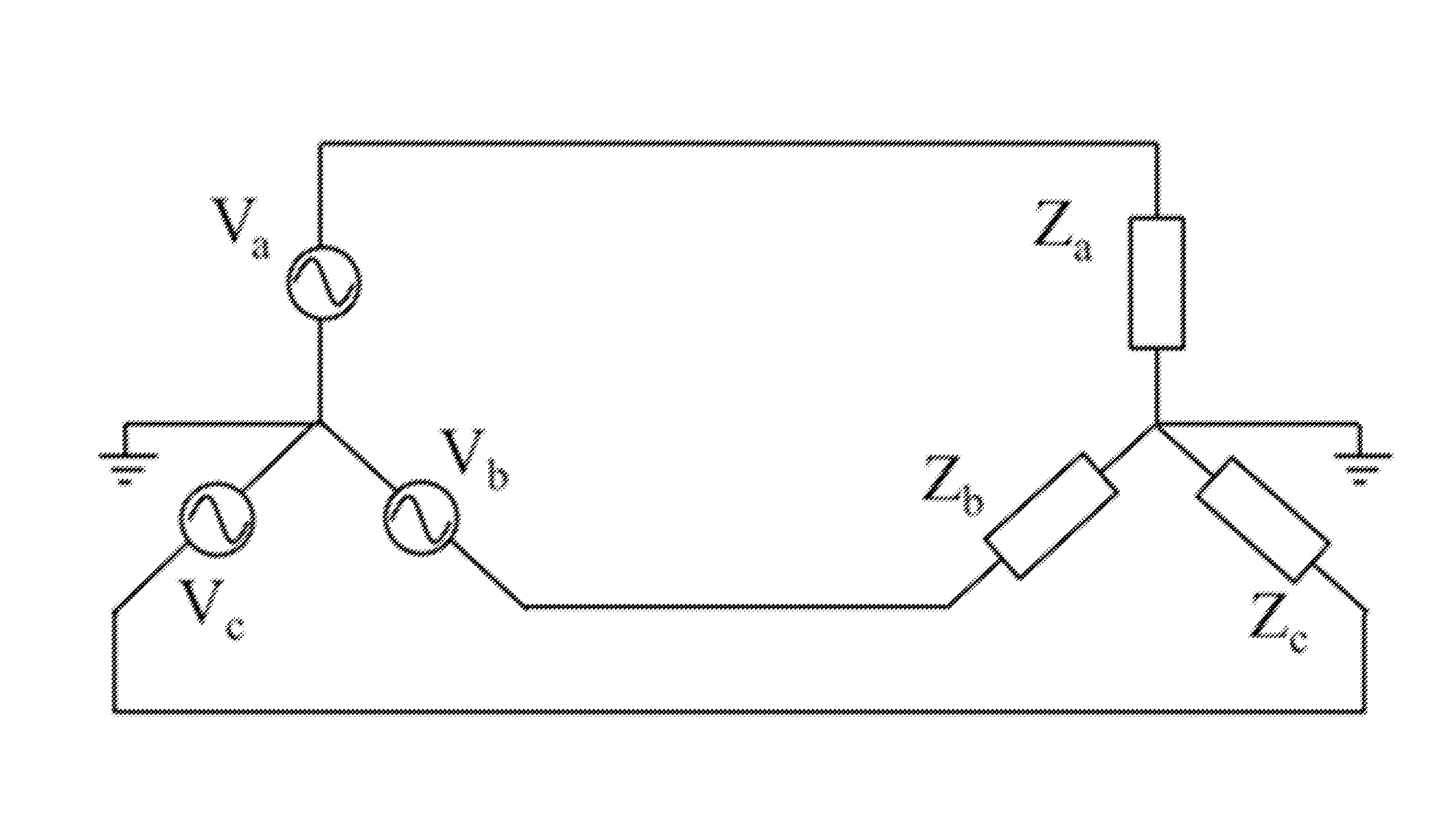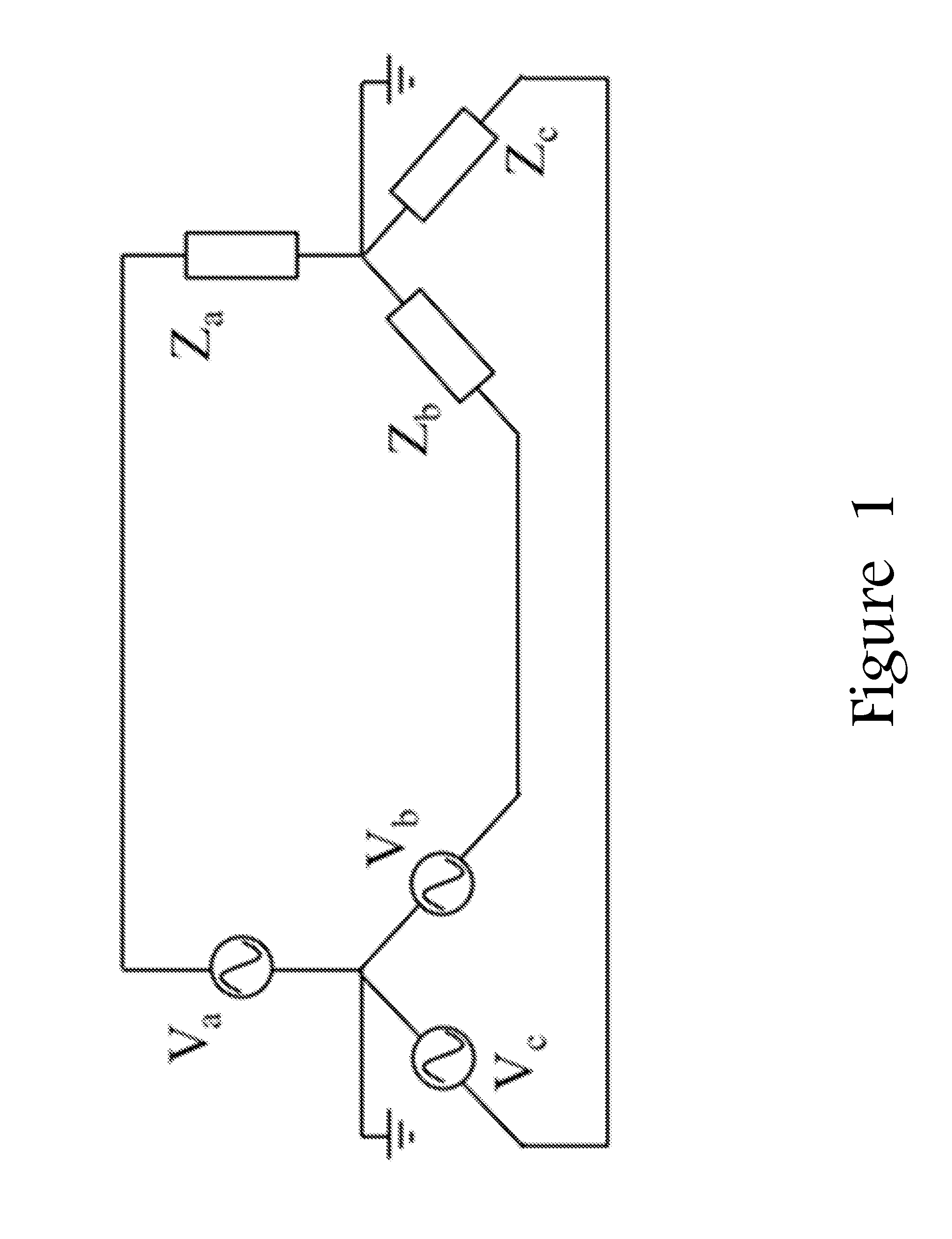System and method for monitoring and managing three-phase power flows in electrical transmission and distribution networks
a technology of three-phase power flow and system, applied in the field of monitoring and analysis of both, can solve problems such as unbalanced conditions, other types of problems to equipment connected to the network, and the power flow methods used in the distribution network may no longer make assumptions about the radial structur
- Summary
- Abstract
- Description
- Claims
- Application Information
AI Technical Summary
Benefits of technology
Problems solved by technology
Method used
Image
Examples
Embodiment Construction
[0026]Application of the method described in parent U.S. Pat. No. 7,519,506 to three-phase networks is not straightforward due to the various ways in which the phases are wired and, in particular, the way that injection magnitudes are typically specified when solving a power flow problem. The method described herein is presented under two different embodiments: a first one in which the full admittance matrix is used for the whole system comprising the three phases (slower, but allowing for arbitrary imbalances in the network and providing a simpler implementation); and a second one in which we take advantage of cases in which the imbalances are not very large (more efficient implementation, while at the same time retaining full precision). These methods can also be applied to the problem of calculating the power-flow solution under short-circuit conditions, providing a more exact solution that contrasts to the traditional fault-current calculations, in which the problem is grossly a...
PUM
 Login to View More
Login to View More Abstract
Description
Claims
Application Information
 Login to View More
Login to View More - R&D
- Intellectual Property
- Life Sciences
- Materials
- Tech Scout
- Unparalleled Data Quality
- Higher Quality Content
- 60% Fewer Hallucinations
Browse by: Latest US Patents, China's latest patents, Technical Efficacy Thesaurus, Application Domain, Technology Topic, Popular Technical Reports.
© 2025 PatSnap. All rights reserved.Legal|Privacy policy|Modern Slavery Act Transparency Statement|Sitemap|About US| Contact US: help@patsnap.com



